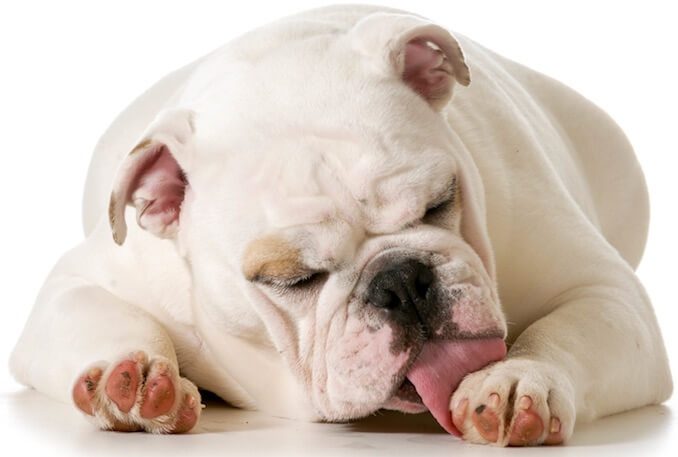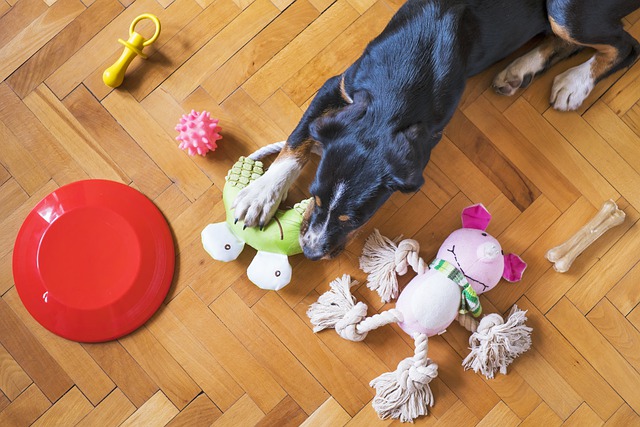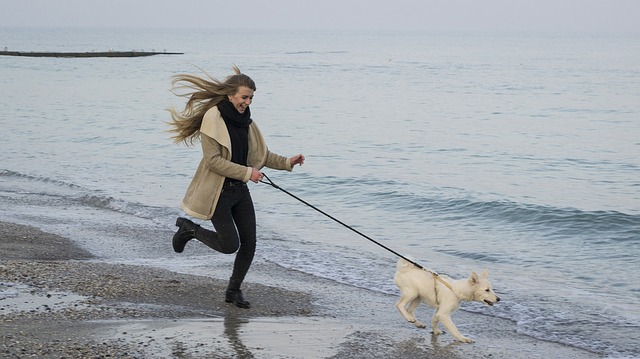How to Keep a Dog From Licking Stitches Without a Cone

As an Amazon Associate, we may receive a small commission from qualifying purchases but at no extra cost to you. Learn more.
When your pup is injured or after he's gone through surgery, there are high chances that he will lick his wound in an attempt to reduce pain or irritation as well as clear any discharge from the wound or incision.
While minor licking may not be an issue, excessive licking could delay healing, remove stitches, reopen the wound, lead to infections, make it hard to apply any gel or crème on the wound, and even kills tissues around the incision area.
To ensure complete healing, therefore, it is important to figure out how you can limit your dog's access or ability to lick the wound as much as you can.
Most vets recommend the use of Elizabethan collars (or e-collars). While they are effective, they can be a pain in the butt as your pup tries to navigate his day-to-day life around your home.
For instance, some e-collars are stiff and bulky, making it a bit hard for dogs to move around. Some may also be too large and can scare your dog and limit his ability to see properly.
As a result, your dog may appear depressed while wearing an e-collar and even refuse to eat or drink. Put simply, most dogs will not be thrilled to be stuffed into an Elizabethan collar.
Fortunately, there are several tactics that you can use to prevent your dog from licking his wound instead of forcing him to endure these "cones of shame".
1. Bandaging
Bandaging the wound will not only ensure that your dog doesn't access the wound but will also create a hygienic wound environment that can go a long way in promoting fast healing.
However, wounds require free flow of oxygen to heal. So, while it is important to ensure that the bandage is on firmly, ensure that it is not too tight and that it restricts the free flow of air or your dog's movement.
You can achieve this by applying the bandage using even pressure and ensuring that there are no wrinkles in the bandage.
The only issue with using a bandage to cover dog wounds is that some dog breeds love chewing things, especially if the thing is on their body and they want it off. Such dogs will simply chew through the bandage to access their wounds!
If your dog falls in this category, consider using other strategies on this post because using a bandage for him will be ineffective.
If your dog isn't a heavy chewer and you decide to use a bandage to cover his wounds, ensure that it is changed regularly—2-3 days for open wounds.
Remember to also follow your vet's directions and call him immediately if you notice swelling, soreness, or foul smell.
2. Surgical Recovery Suit

Instead of restricting the movement of your dog's head using a cone, you can simply prevent licking by covering the wound.
One of the best ways to cover a dog's wound, especially if it is located on his body, is to use a surgical recovery suit.
The surgical suits are made of soft fabric and are designed to cover your dog's wound in a way that limits obsessive licking, prolonging the healing process. Some are even customized to snap or fold up so that your dog can eliminate with ease.
They also come in a variety of styles, colors, and sizes, allowing you to choose what suits your dog.
3. T-shirts, Onesies, and Men's Boxers
If you cannot afford a surgical recovery suit or access one for whatever reason, a T-shirt or men's boxers will still do the trick.
If the wound is located near your dog's back legs, tail, rump, or genital area, you can cover it using men's boxers. And if the wound is located in the chest or abdominal area, wearing a T-shirt will offer excellent protection.
For small dogs, baby onesies will come in handy. Just ensure that you choose a baby onesie for 12-24 months and that it is flat against your pup's fur for maximum comfort. Consider rolling it forward when your dog wants to potty.
While these items will prevent your dog from touching his wound or stitches, some dogs may still manage to scratch through the fabrics.
So, they may only be effective for minor injuries or if you are just looking for a way to prevent your dog from licking some topical lotion you've applied on your dog's wound.
It is also advisable to supervise your dog while wearing these items so that he doesn't remove them.
4. Boots
Boots are fairly easy to pull on and off, making them an excellent option for covering wounds on your dog's legs or paws.
As you can guess, boots won't be very helpful for wounds located in your dog's tummy or back.
You can use boots on their own or make your pup wear them over a bandage. If you decide to use both, it important to opt for boots that are at least one size bigger. This will ensure that the boots not only stay on your dog but are also not too tight for him.
Some dogs will hate boots the same way they hate e-collars. If your dog falls in this category, you should re-consider using boots because you'll basically be picking one evil over another.
5. Anti-Lick Sprays And Strips
Anti-lick sprays and strips are designed with terrible flavors like bitter apple to discourage your dog from licking.
The best options are products that are made with natural ingredients because they have few side effects and seldom trigger allergic reactions.
Many vets vouch for Grannicks Bitter Apple as one of the best products in this niche. Not only does it discourage your dog from licking his wounds but you can also use it to deter your dog from chewing your furniture or biting your valuables.
The only issue with ant-licking sprays is that they are not effective for all dogs. Some dogs will continue to lick their wounds regardless of how bitter a spray taste.
If this describes your dog, try other methods we've mentioned on this post or come up with a more creative solution.
Most importantly, always discuss with your vet before you use any spray on your dog's wound—some products may cause serious irritation, which could cause even more licking.
6. Distract Your Pup

Another simple strategy that you can leverage to stop your dog from licking his wound is to redirect his attention away from the wound.
Consider keeping him occupied with something to chew or make his tongue and paws busy using the following tactics:
- Instead of feeding your dog on a normal bowl, which only takes him a few minutes to finish his food, use a slow dog feeding bowl that will slow down fast eating, making him more occupied. Check this post for the best options: 25 Best Dog Bowls That Slow Down Eating.
- Chilled food or toys stuffed with peanut butter can also help occupy your furbaby's time. Check this post for such toys: 15 Best Dog Toys You Can Put Peanut Butter in.
- Serve him ice cubes of soup or meat broth. He will chase it around and consume it slowly, distracting his attention from his wound. Here are the best meat broth products if you can't prepare your own: 8 Best Store-Bought Bone Broth for Dogs (plus Easy Homemade Recipes).
7. Invest In Itch Relief Products
In most cases, your dog will lick his wound because it is itching. You can help your pooch by getting him products that are meant to relieve itching, including medicated shampoos, plain Benadryl, or steroids for severe cases.
8. Exercise

Your dog may also resort to licking his wounds due to boredom. So, even if you buy some of the products we've recommended on this post, don't just lock your pup in his kennel and expect him to steer clear of his wound.
The moment he becomes bored, he will start licking his wound or ripping out his stitches.
Ensure that your pup gets a good walk or run depending on how active he is.
Final Thoughts
Hopefully, now you understand how to stop a dog from licking his wound without a collar.
Whatever strategy you decide to use, supervise your dog to figure out if it is working for him.
And in case you cannot get your pup to stop licking his wound obsessively, we recommend contacting your vet for more professional input.
Your vet will either prescribe for you medication that can curb the behavior or propose other creative ways that you can use to distract your dog's attention from his wound.
How to Keep a Dog From Licking Stitches Without a Cone
Source: https://healthyhomemadedogtreats.com/how-to-stop-dog-licking-wound-without-collar/